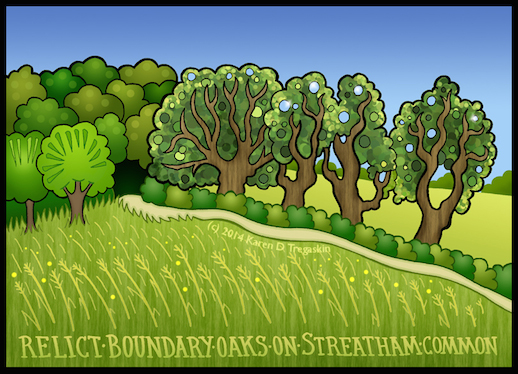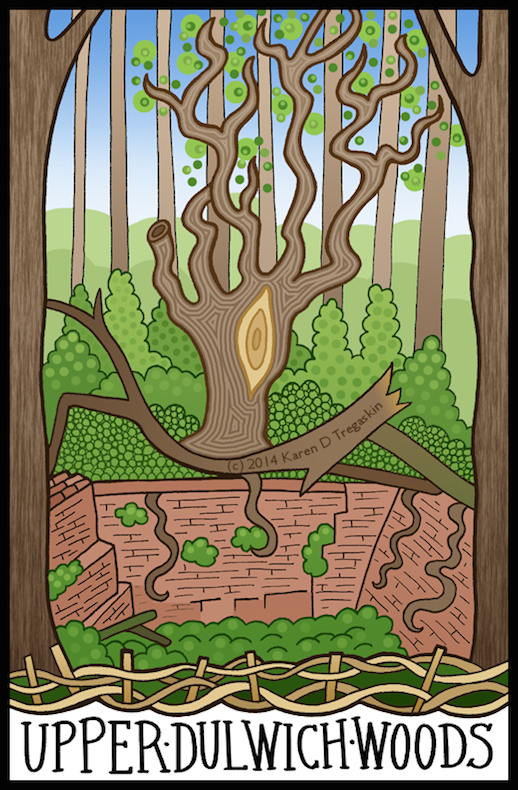Words and pictures by Karen D Tregaskin
9: Boundary Oaks
Speaking of Streatham Common, the woodlands at the Eastern end defy the neat categories of ancient woods and secondary regrowth. The bulk of the woods, now a nature reserve (on the left hand of the drawing) are certainly modern, dating from 1884, when the Metropolitan Board of Works took over the Common. But the massive, gnarled boundary oaks on the right are contemporary with the Great North Wood, and their line marks an even more venerable feature: head-high brambles hide an ancient boundary ditch, which even now marks the modern border of Lambeth and Croydon. The village of Streatham and its Domesday era common has wandered in and out of Lambeth and indeed London itself over the past two centuries, with the coming (and going) of first the Croydon Canal, then the railway, but this boundary feature is probably hundreds – if not thousands – of years old. The presence of these relict oaks and the flora and fauna of their long undisturbed ditch means that the biodiversity of the Streatham Woodlands is far greater than might be expected of such young woods. Colonies of the Purple Hairstreak Butterfly, a flagship species that can be taken as evidence of a wood’s ancient provenance, due to their habit of spending their entire lives never straying far from a single oak tree, have been recorded here.
10: Upper Dulwich Woods
Back on the main walk, from Norwood Park, I dropped down the steep side of Gipsy Hill, haunt of hermits, outlaws and gypsy fortune-tellers as far back as the days of Samuel Pepys, whose wife had her fortune told by Norwood Gypsies in 1688. In the deep dip between the plateau of Crystal Palace and the ridge of Sydenham Hill is the distinctly misnamed Upper Dulwich Wood. Again, this nature preserve is a mixture of 20th Century regrowth, with Victorian yews planted as ornamental bushes turned to massive, gnarled trees, and relict oaks that survived in the back gardens of the row of Victorian villas, whose collapsed basements now form bug hotels and sunken mushroom gardens. This area was the remains of Vicar’s Oak Coppice – named after another famous boundary oak that once stood nearby, on the site of the roundabout by the Crystal Palace bus station. Vicar’s Oak marked the junction of four ancient parishes, Lambeth, Camberwell, Croydon and Battersea, and is still the boundary of modern London boroughs.
Ghosts of the Great North Wood archive.
For more illustrations, please visit Karen D Tregaskin’s Flickr / Tumblr/ Twitter

